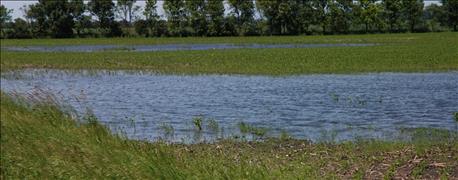August 31, 2020

USDA published its final rule on determining whether land is considered highly erodible or a wetland on Aug. 27. The rule integrated public input and follows a focused effort to improve consistency and use of science in making determinations.
“Highly erodible land and wetland determinations are the gateway to USDA programs, and we strive to provide the highest quality technical assistance to inform decision-making by farmers and ranchers," said Ron Alvarado, State Conservationist for Oregon.
To be eligible for most USDA programs, producers must be conservation compliant with the highly erodible land and wetland provisions. These provisions aim to reduce soil loss on erosion-prone lands and to protect wetlands for the multiple benefits they provide.
The final rule was published in the Federal Register on Aug. 28. This follows an interim final rule published Dec. 7, 2018.
This final rule confirms most of the changes made by the December 2018 interim final rule and makes these additional updates:
Adding the requirement of the 2018 Farm Bill that USDA will make a reasonable effort to include the affected person in an on-site investigation conducted prior to making a wetland violation technical determination.
Further clarifying how wetland hydrology is identified for farmed wetlands and farmed wetland pasture.
Adding clarification to the consideration of best-drained condition for wetland hydrology in keeping with the definition of prior converted cropland.
Relocating the provision that wetland determinations can be done on a tract, field, or sub-field basis in order to improve clarity.
USDA received comments from 65 commenters who provided 354 comments in response to the interim rule. Additionally, one of the 65 comments was submitted by an organization that submitted a spreadsheet of 15,094 substantively identical comments.
Reaction
The American Farm Bureau Federation said the final rule does not remedy unfair enforcement by the Natural Resources Conservation Service.
“Farmers deserve a fair process and clarity, including an understanding of the exemptions authorized by Congress," said American Farm Bureau Federation President Zippy Duvall. "They deserve to be protected from repeated, unjustified, costly decisions by NRCS. Although we appreciate recent actions by USDA to rectify historic wrongs, this was a missed opportunity to ensure fairness going forward. We will continue to examine this rule and our options to address its shortcomings.”
Sources: USDA, AFBF
About the Author(s)
You May Also Like




